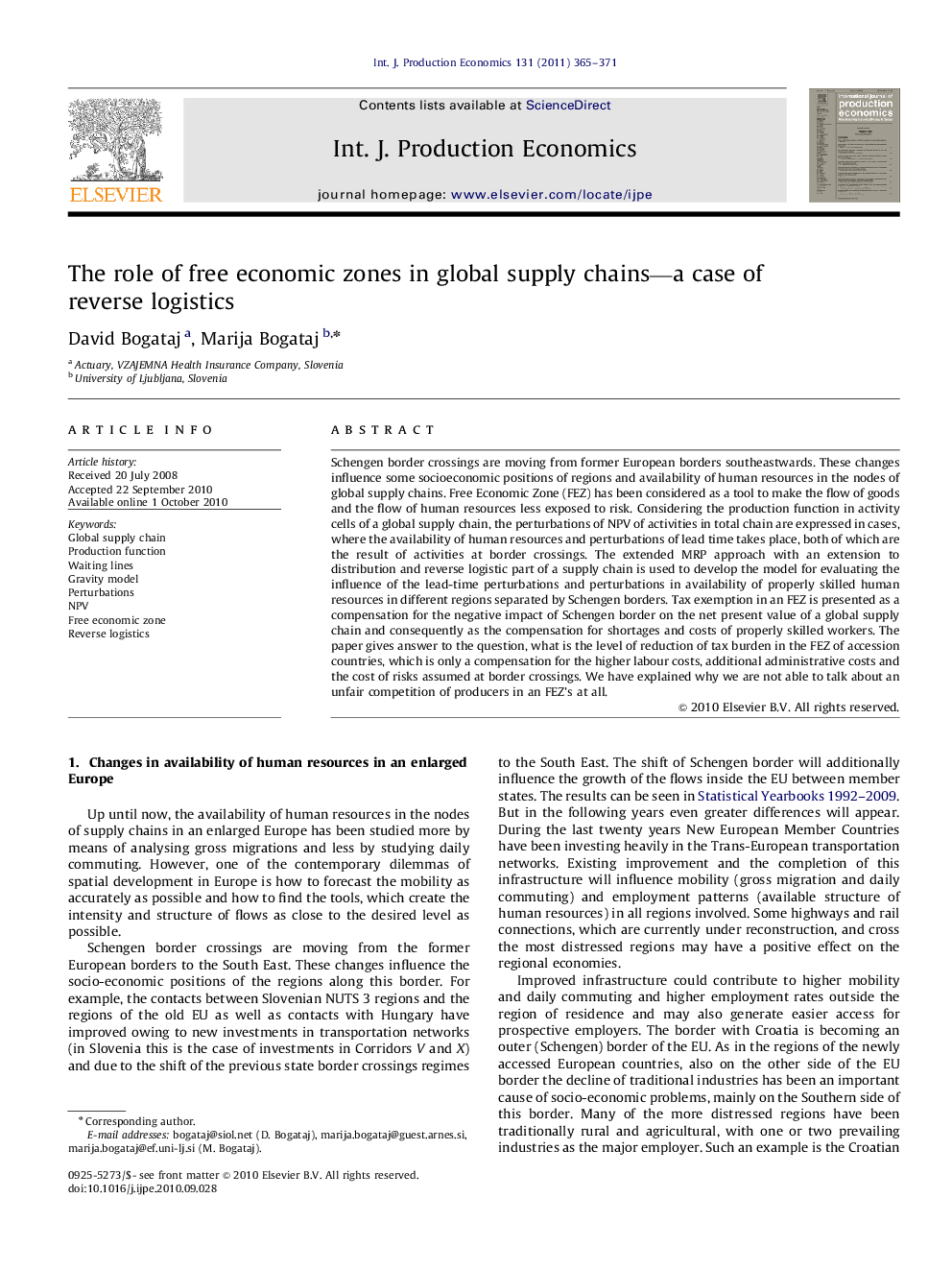| کد مقاله | کد نشریه | سال انتشار | مقاله انگلیسی | نسخه تمام متن |
|---|---|---|---|---|
| 5081308 | 1477599 | 2011 | 7 صفحه PDF | دانلود رایگان |
عنوان انگلیسی مقاله ISI
The role of free economic zones in global supply chains-a case of reverselogistics
دانلود مقاله + سفارش ترجمه
دانلود مقاله ISI انگلیسی
رایگان برای ایرانیان
کلمات کلیدی
موضوعات مرتبط
مهندسی و علوم پایه
سایر رشته های مهندسی
مهندسی صنعتی و تولید
پیش نمایش صفحه اول مقاله

چکیده انگلیسی
Schengen border crossings are moving from former European borders southeastwards. These changes influence some socioeconomic positions of regions and availability of human resources in the nodes of global supply chains. Free Economic Zone (FEZ) has been considered as a tool to make the flow of goods and the flow of human resources less exposed to risk. Considering the production function in activity cells of a global supply chain, the perturbations of NPV of activities in total chain are expressed in cases, where the availability of human resources and perturbations of lead time takes place, both of which are the result of activities at border crossings. The extended MRP approach with an extension to distribution and reverse logistic part of a supply chain is used to develop the model for evaluating the influence of the lead-time perturbations and perturbations in availability of properly skilled human resources in different regions separated by Schengen borders. Tax exemption in an FEZ is presented as a compensation for the negative impact of Schengen border on the net present value of a global supply chain and consequently as the compensation for shortages and costs of properly skilled workers. The paper gives answer to the question, what is the level of reduction of tax burden in the FEZ of accession countries, which is only a compensation for the higher labour costs, additional administrative costs and the cost of risks assumed at border crossings. We have explained why we are not able to talk about an unfair competition of producers in an FEZ's atall.
ناشر
Database: Elsevier - ScienceDirect (ساینس دایرکت)
Journal: International Journal of Production Economics - Volume 131, Issue 1, May 2011, Pages 365-371
Journal: International Journal of Production Economics - Volume 131, Issue 1, May 2011, Pages 365-371
نویسندگان
David Bogataj, Marija Bogataj,